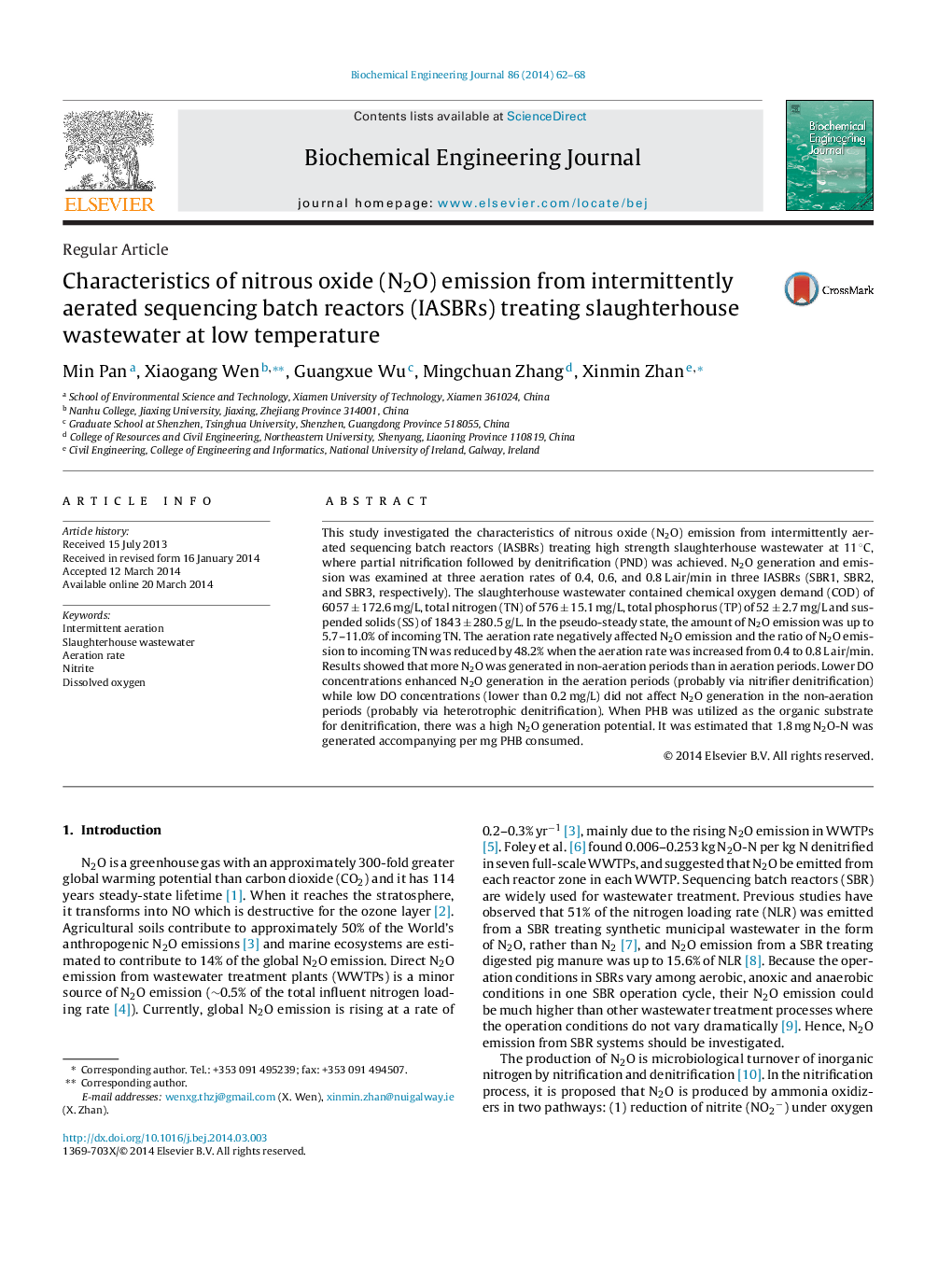| Article ID | Journal | Published Year | Pages | File Type |
|---|---|---|---|---|
| 3179 | Biochemical Engineering Journal | 2014 | 7 Pages |
•High N2O emission (11.0% of NLR) from slaughterhouse wastewater treatment at 11 °C.•N2O emission to incoming TN was reduced by 48.2% when increasing the aeration rate.•NH4+-N oxidization and NO2−-N reduction did not influence N2O generation solely.•There was a correlation between PHB utilization and N2O generation.
This study investigated the characteristics of nitrous oxide (N2O) emission from intermittently aerated sequencing batch reactors (IASBRs) treating high strength slaughterhouse wastewater at 11 °C, where partial nitrification followed by denitrification (PND) was achieved. N2O generation and emission was examined at three aeration rates of 0.4, 0.6, and 0.8 L air/min in three IASBRs (SBR1, SBR2, and SBR3, respectively). The slaughterhouse wastewater contained chemical oxygen demand (COD) of 6057 ± 172.6 mg/L, total nitrogen (TN) of 576 ± 15.1 mg/L, total phosphorus (TP) of 52 ± 2.7 mg/L and suspended solids (SS) of 1843 ± 280.5 g/L. In the pseudo-steady state, the amount of N2O emission was up to 5.7–11.0% of incoming TN. The aeration rate negatively affected N2O emission and the ratio of N2O emission to incoming TN was reduced by 48.2% when the aeration rate was increased from 0.4 to 0.8 L air/min. Results showed that more N2O was generated in non-aeration periods than in aeration periods. Lower DO concentrations enhanced N2O generation in the aeration periods (probably via nitrifier denitrification) while low DO concentrations (lower than 0.2 mg/L) did not affect N2O generation in the non-aeration periods (probably via heterotrophic denitrification). When PHB was utilized as the organic substrate for denitrification, there was a high N2O generation potential. It was estimated that 1.8 mg N2O-N was generated accompanying per mg PHB consumed.
